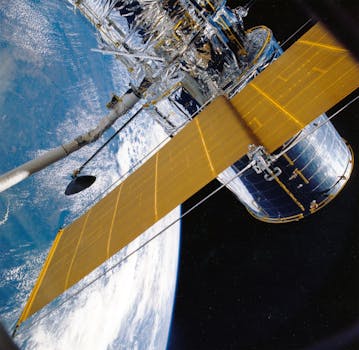
The Future of Connectivity: Latest Breakthroughs in Satellite Telecommunications
The Future of Connectivity: Latest Breakthroughs in Satellite Telecommunications are revolutionizing the way we communicate and access information. With the increasing demand for global connectivity, satellite telecommunications have become a vital part of modern communication systems. Recent breakthroughs in satellite technology have enabled faster, more reliable, and more secure connections, transforming the way we live, work, and interact with each other.
Satellite telecommunications have come a long way since the launch of the first commercial communications satellite, Intelsat 1, in 1965. Today, there are thousands of satellites in orbit around the Earth, providing a wide range of services, including television broadcasting, internet connectivity, navigation, and weather forecasting. The latest advancements in satellite technology have focused on improving the speed, capacity, and security of satellite communications, making them an essential part of modern telecommunications infrastructure.
Advances in Satellite Technology
One of the significant advancements in satellite technology is the development of high-throughput satellites (HTS). HTS satellites use multiple spot beams to provide higher bandwidth and faster data transfer rates, making them ideal for applications such as broadband internet access and video streaming. Another breakthrough is the use of advanced propulsion systems, such as electric propulsion, which enables satellites to maintain their position and altitude more efficiently, reducing the need for fuel and increasing their lifespan.
Additionally, the development of smaller, more affordable satellites, such as cube satellites and nano satellites, has democratized access to space, enabling more organizations and countries to launch their own satellites and provide telecommunications services. These smaller satellites are also more agile and can be deployed more quickly, making them ideal for applications such as disaster response and remote sensing.
Applications of Satellite Telecommunications
Satellite telecommunications have a wide range of applications, including broadband internet access, television broadcasting, navigation, and weather forecasting. They also play a critical role in providing connectivity to remote and underserved communities, where traditional telecommunications infrastructure is limited or non-existent. Satellite-based internet services, such as those provided by companies like SpaceX and OneWeb, aim to provide global coverage and bridge the digital divide, enabling more people to access the internet and participate in the global economy.
Satellite telecommunications are also used in various industries, such as aviation, maritime, and logistics, to provide critical communications services, such as air traffic control, navigation, and cargo tracking. They are also used in emergency response situations, such as natural disasters and search and rescue operations, to provide vital communications services and support relief efforts.
Challenges and Future Directions
Despite the many advancements in satellite telecommunications, there are still several challenges that need to be addressed, including the risk of congestion in the Earth’s orbit, the need for more efficient and sustainable propulsion systems, and the requirement for more robust and secure communications protocols. Additionally, the increasing reliance on satellite telecommunications highlights the need for more resilient and redundant systems, to ensure that critical communications services are always available.
Looking to the future, satellite telecommunications are expected to play an even more critical role in providing global connectivity and enabling new applications and services. The development of next-generation satellite systems, such as the European Space Agency’s Quantum satellite and the NASA’s Space Technology Mission Directorate’s (STMD) Satellite Servicing Projects Division, will provide even faster, more secure, and more efficient communications services. Additionally, the integration of satellite communications with other technologies, such as 5G and the Internet of Things (IoT), will enable new use cases and applications, such as smart cities and autonomous vehicles.




